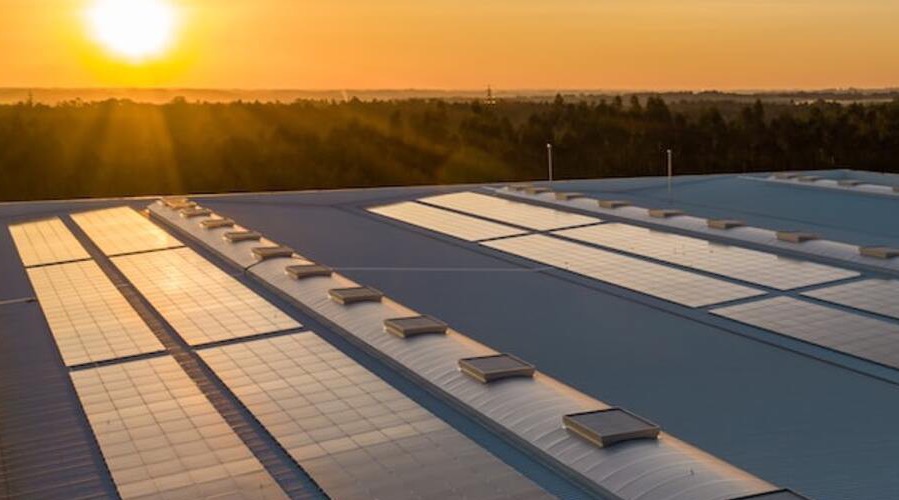
At some places on the Dutch Countryside, the C2000 critical communications TETRA network, experience disruptions. Because of these faillures, emergency services like police fire and ambulance services are now experiencing difficulties in their day-to-daycommunications. Research has shown that PV (Photovoltaics) installations are the cause. According to Eddie Hut, Market Supervision Inspector at the Telecom Agency in The Netherlands, the solution to the problem lies in the first instance with the manufacturer and the installer, “but the rest of the chain must also take responsibility.
“We received the first problems back in 2018,” says Eddie Hut. “Radio amateurs heard strange noises on their equipment. Soon thereafter, we received notifications from the C2000 network. This mainly concerned communication problems with subscribers at the edges of the service area. Research showed that there was a connection with Solar panel installations, especially installations in the middle segment (installations with fifty to five thousand panels). These are often the somewhat larger installations on farm sheds, retail outlets, schools and industrial buildings. Since PV installations are placed at a height, interference signals spread further via connection cables. And because the malfunction was also detectable on the C2000 network, coverage of this critical communications TETRA network that is used by police, fire brigade and other emergency agencies decreased, which also drew the attention of politicians and then the Secretary of State. Mona Keijzer."
Reciprocity
Manufacturers and installers are obliged to comply with European regulations regarding the equipment and installation. The electromagnetic compatibility (EMC) regulations, namely the EMC Directive (2014/30/EU), Radio Equipment Directive (2014/53/EU) and its implementation in the Telecommunications Act. “These regulations are based on reciprocity, which means that an electrical device may not inadvertently interfere with another electrical device. Equipment that complies with the EMC directive does not disturb, but not all PV installations comply with the EMC directive.”
Installation
For the PV panels, the installer can choose from different types of inverters: the microinverter, the string inverter and the optimizer. “It is not the panels that cause the failure. The source of interference can in the first placve be found by the energy regulators. They should emit as few emissions as possible. The energy controllers must therefore comply with EMC regulations. As an Agency, we monitor this. We look at the emission of several energy regulators on one roof. The minimum requirement is that it has to be a CE-marked inverter. But that is not enough. The manufacturer is also obliged to provide proper installation instructions. In practice, the string inverter appears to cause the fewest problems, because energy is regulated per string and there are therefore relatively few 'regulators'”, according to the Market Supervision inspector, who states that the installer also has a responsibility, because he must correctly install the panels with the associated cabling. And that's where things sometimes go wrong, according to the Market Supervision Inspector. “Installers often know from lightning protection that you have to lay DC cables in parallel, with some space in between due to electric arcs. That is less known from EMC. It is important to avoid loops in DC cables, because this causes interference on other devices. Additional measures may also be required, such as laying cables in metal pipes and gutters for good protection. It is also possible to place extra EMC/EMI filters and to apply ferrite beads over the DC cables at the inputs and outputs of equipment.”
But how is it possible that there are still installers who do not comply with the above installation regulations?
“Sometimes it's carelessness or ignorance, and sometimes it's economy by running the cable from the panel to the inverter via the shortest route.”
According to Hut, the solution to the problem therefore lies in the first instance with the manufacturer and the installer, but the rest of the chain cannot escape its responsibility with this. “We still see too many installers on the roof with insufficient knowledge, but we cannot place full responsibility there. In that context, we refer to systems thinking, by which we mean that the entire chain is responsible. In addition to manufacturers and installers, the wholesaler also plays a role by providing good information and the correct installation instructions. And the training institutes can do even better work. In addition, stricter supervision is required of RVO subsidies, for example only subsidies to parties that have installed the installation in accordance with NEN 1010. Finally, there is the client, who can of course assume that the installer knows what he is doing, but check whether he is a recognized installer and a specialist in the installation of PV panels. And also whether he is familiar with the 'loop story'. Of course, only PV equipment with a CE marking may be placed on the European market. And because we are talking about clients from the middle segment here, you can certainly expect them to work with qualified and well-trained installers. But we still see that too many clients mainly make a price-driven choice. The installer must in any case install according to NEN 1010 and the installation instructions of the manufacturer,” says Hut, who adds that a summary of installation instructions can be found in NPR5310.
This article was published for the first time on the website of www.elektropraktijk.nl
